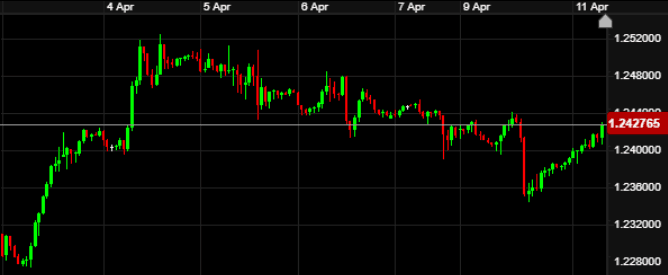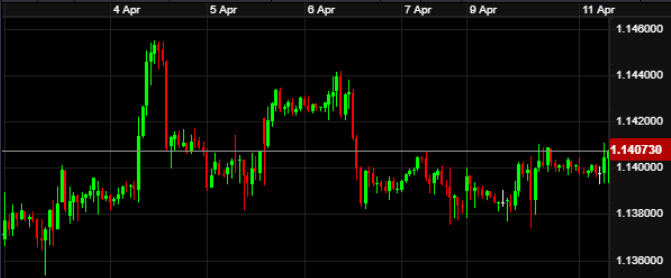ACM Update 11-04-23

Back to business after the Easter bank holidays in the UK. In economic news, we saw plenty of push and pull between MPC members last week regarding short term monetary policy. On the continent, the ECB still see hikes to come, and in the US jobs data exceeded estimates (just) for the twelfth month in a row!
A short week for UK markets last week, and another condensed one this week too after the Easter weekend. With a lull until the next round of interest rate announcements from the big three (BoE, ECB & Fed), any hints from policy-makers are being taken very seriously for clues as to their next actions.
At the Bank of England, there seems to be a conflict of opinion between two of the nine MPC members. Chief Economist Huw Pill hinted at further interest rate hikes being required. He insists that the Bank of England needs to “see the job through” in its ongoing battle with inflation. Indeed, financial markets agree with him as they see a peak interest rate of 4.5% in the current cycle. However, consensus is mixed as to whether the final rate hike would come in the May meeting or the following one in June.
On the other side of the coin though, is fellow MPC member Silvana Tenreyro, who predicts inflation to drop rapidly, even with no further action required. She expects that “the current high level of bank rate will require an earlier and faster reversal, to avoid a significant inflation undershoot”. Tenreyro’s announcements came just a few hours after those of Pill, but the mixed messages are certainly ideal. That said, the independent MPC member has voted against a rate hike in every meeting since September, and is due to leave the committee after the June meeting.
Despite the back and forth between the two, markets seem to be paying more attention to Chief Economist Pill. Off the back of this, GBP touched its highest level against the Dollar since June last year, on Tuesday, before fading off in the latter part of the week. We will need to see further GBP positivity in order to see a close above the current resistance levels around 1.25. If those are broken through, we could well see further upside, but seemingly not yet.
The Bank of England also published their latest inflation expectations for 2023, still optimistic that inflation will be at 5.8%.
Recent moves on GBP-USD can be seen in the chart below:

Over in the US, outside of all the media furore surrounding Donald Trump, there was only one real data release in the form of Non-Farm Payrolls. This is released on the first Friday of the month, and happened to land whilst UK markets were closed for Good Friday. The data illustrates the number of jobs added to the US economy in the month, adjusted for seasonality.
Remarkably, for the twelfth month in a row the figure came in above the estimated number, this time hitting 236,000 new jobs versus the 228,000 expected. This is the closest figure to the estimate for a long time, but still shows the huge pace of jobs being added in the US despite all of the policy measures being implemented by the Federal Reserve.
The pace of jobs does seem to be slowing though, which is actually a good thing in the Federal Reserve’s battle against inflation. The combination of the figure being close to the estimate and many other major markets being closed, meant a somewhat smaller amount of market movement than usual for Non-Farm Payrolls.
That was pretty much it out of the US last week, other than the number of tabloid pages being occupied by Trump. The Dollar opened slightly stronger on Monday (as per the above chart), as risk aversion returns amid the escalating China-Taiwan tensions over the weekend. This quickly subsided though on Tuesday morning.
With a short week for Europe, as with sterling a lot of the movement came after ECB member comments on upcoming interest rate movements. Dutch Central Bank chief, Klaas Knot, suggested the bank are “certainly not done with interest rate hikes”, in his country’s NRC newspaper. His case is that with inflation at circa 6%, you cannot fight such a figure with an interest rate of only 3%.
Knot is (as with many others) unsure as to whether the ECB need to make a move of half a per cent in their next meeting, or whether increments of 0.25% will now be enough to combat inflation in the bloc. Only time, and votes at the next meeting, will tell.
Sterling-Euro was very much rangebound in a bracket of circa one cent last week, as demonstrated in the chart below:

Elsewhere, the Australian Dollar lost ground last week as the RBA opted to hold their headline interest rate. Rates were left at 3.6%, but Chairman Philip Lowe insisted this is likely more of a pause for now rather than the end of rate hikes. Alas, the AUD weakened.
In New Zealand however, the RBNZ went the other way in surprising markets with a 50-basis point hike (versus 25 expected). This took their interest rate to its highest in over 14 years at 5.25%, having hiked a full five per cent in 18 months.
The week ahead:
Monday – UK BANK HOLIDAY
Tuesday – Eurozone Retail Sales (10:00 UK time)
Wednesday – US CPI Inflation (13:30), BoE Governor Andrew Bailey speech (14:00), Bank of Canada rate announcement (15:00), Federal Reserve meeting minutes (19:00)
Thursday – UK GDP (07:00). US PPI & Unemployment Claims (13:30)
Friday – US Retail Sales (13:30)
As mentioned, another four day week with plenty squeezed in! Wednesday will be the busiest day in terms of data, so any clients with requirements on either side of the equation for GBP-USD should make sure to get in touch with the team in advance. The Dollar has made a better start to the week despite all of the bank holidays.
Andrew Bailey’s speech will be a key one to watch for any clues as to ongoing policy in the UK.
Have a great week.